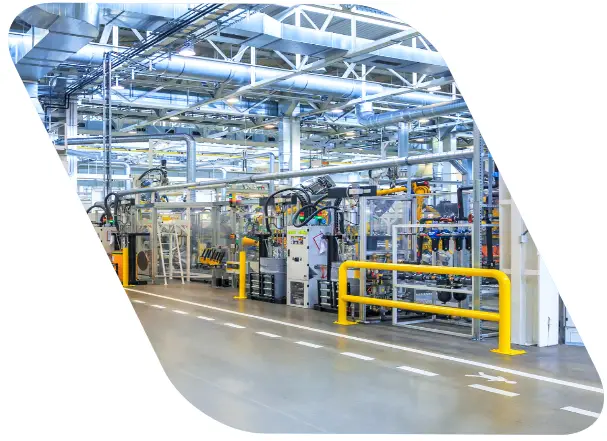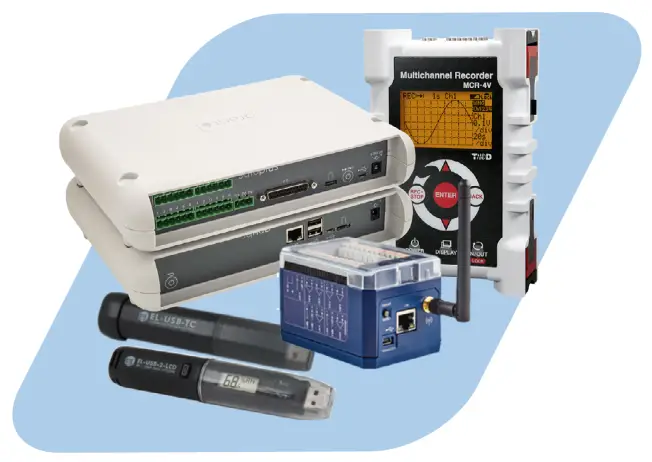DATALOGGERINC SQ2010 Portable Data Logging System User Guide

Portable data logging systems are essential tools used in various industries to monitor and record temperature, voltage, current, and other values Used for troubleshooting, quality control, process monitoring, and data collection, these compact devices require careful selection. This guide provides key questions to consider when choosing the right portable data logging system for your specific needs.
- Number and type of inputs: How many channels do you need, and what type of sensors will you be using?

- Measurement accuracy and resolution: How precise do your measurements need to be?
- Measurement speed: How fast do you need to sample the inputs?
- Sensor signal conditioning: Does the system need to amplify or filter the signals from your sensors?
- Alarms: Do you need notification if the measurements are outside of the expected range? What type of alarm is required, local or remote?
- Standalone operation vs. tethered operation: Do you need the system to operate independently, or will it be connected to a computer?
- Durability and environmental conditions: Will the system be used in harsh environments?
- Communication methods: How will you transfer data from the data logger’s memory to your computer?
- Software: What software is included with the system, and does it meet your needs?
- Calibration: How often will the system need to be calibrated?
By considering these factors, you can choose a portable data logging system that meets your specific needs and applications.
12 Questions For Selecting A Portable Data Logging System
Every day, hundreds of calls and emails come in to data logger distributors and systems integrators asking: “Which product is best for my application?” Whether you’re a technician planning your latest project or you’re a buyer filling a requisition, the sheer number of data logger manufacturers and models can be overwhelming. To make your selection easier, here are ten questions to help you through the decision process:
1. What Are Your Data Logging Needs?
Typical data logging and Data Acquisition (DAQ) applications focus on collecting data to make a determination about efficiency, maintenance timing, or R&D. These systems fea- ture flexible programming and communications capabilities, and include portable sys- tems powered by battery or external power supply.
2. What Is The Required Sample Rate?
An important question to ask yourself is how often you need to record a measurement (i.e., the logger’s sampling rate). Most data loggers record data at rates as fast as 1Hz (once a second) or slower (once per hour or a few times per day). Data acquisition systems can sample hundreds or thousands of times per second but require more power and are more expensive. The maximum sampling rate (bandwidth) is a significant factor in the overall cost of the system. A higher sample rate captures more rapid changes in the signal but if the measured value only changes slowly, for example the temperature of a large tank of water or lake, sampling once a second only generates a lot of redundant data.
3. How Many Inputs Do You Need?
Do you just need to log a single measurement value (such as temperature) or several types of measurement values (current and voltage)? Some models are designed to measure a single measurement, while multi-input loggers include models to monitor AC voltage/current, DC voltage/current, or temperature & humidity. Universal input data loggers are designed to record from almost any physical measurement sensor. Data loggers are also available in expandable configurations capable of handling anywhere from one to hundreds of inputs.
4. What Type of Sensors Will You Need?
Knowing your sensor type is important when selecting a data acquisition system. These systems are useful for almost every industry, including food & beverage, life science, and manufacturing. The most common reason for needing a data logging system is to monitor and record temperature using thermo-couples, RTD’s or thermistors. Other possible options include current/voltage sensors for electrical applications, pressure sensors for liquids or gasses, flowmeters, digital inputs to monitor switches or relays, serial communications interfaces such as RS232, RS485 or SDI-12 for environmental monitoring, or connectivity to MODBUS or CAN based devices and systems. Knowing the types of sensors be used is crucial as it dictates the type of signal conditioning that will be needed – either in the logger or externally.
5. How Much Memory Does the Logger Need?
Consider how much storage space you’ll need. Depending on your application, you may want to capture only a few minutes’ worth of data, several months’ worth, or to continually monitor and archive all the data. Depending on the data logger, there may be an internal memory limit, or the logger may offer the option of using external memory such as a USB memory stick.
6. Will You Need Alarm Capability?
Ask yourself if you need to receive an alarm when your measurement value goes outside of a specified range of values. If so, how do you want to be notified? Consider both local alarms available in systems with digital or relay outputs can give a warning via an LED or audible alarm or more advanced options for remote notification available on network connected systems which can provide alarms via SMS text message, email, and even voice call notifications!
7. Where Do You Plan To Install The System?
There are data logging systems designed for fixed installation and others for portable applications. If the system needs to be portable, size, weight and power source will be important considerations. When considering how the logger will be used, ask yourself these questions:
- How will system be powered? Battery, AC adapter, solar panel, etc.
- Does it need to be protected from moisture and dirt?
- Does the system need to be completely self-contained so that it can be used outside or in a hazardous environment? Will it need a NEMA rated enclosure?
Before looking at communications options, first, decide how you’d prefer to retrieve the data. Do you plan to bring the device to an office PC to download data, or do you want a system to download it to your PC remotely? Communication with the data logging system for viewing and downloading data can be done in many different ways including:
- Serial RS-232/RS-485 interface connection for legacy systems
- USB interface
- Ethernet network connection
- Wireless interface including Wi-Fi, Bluetooth, and proprietary radio links
- Cellular modem for remote locations where network connectivity is not available
- Satellite modem – for extremely remote locations that lack cellular coverage
9. What Software Is Required?
Of course, the device will require software for configuration to set up the inputs, sample rate, alarms, etc. You’ll also need a way to retrieve data either manually, via an automatic download or via a device like a USB stick. Do you need the ability to plot the data or export it in a format for use with other programs like Microsoft Excel? Make sure you understand how you will analyze the data to get the information you are looking for.
10. What About Calibration, Maintenance And Repair?
Do you need to have the device calibrated to meet some internal or external reporting requirements? If so, what sort of calibration is required, NIST traceable, ISO or A2LA accredited? How often does the logger need to be calibrated or serviced for normal maintenance such as battery replacement? Does the vendor offer repair services if the logger is accidentally damaged?
11. What Level Of Support Or Training Do You Need?
Do you have staff in your organization that can handle the wiring and configuration of the data logger or will you need outside help? Will you need training? What level of sup- port does the vendor provide and is it free or do they charge for it? Some providers also offer value-added services such as customization, configuration, training, programming, etc.
12. Where Can You Get Additional Help?
Selecting the right portable data logging system is crucial for successful data collection and analysis. By spending a little extra time up front and carefully considering these ten key questions to fully define your requirements, you stand a much better chance of ending up with a product that satisfies all your needs. You can download a copy of our requirements checklist here: Data Logger Requirements Checklist.
To learn more about Portable Data Logging Systems, or to find the ideal solution for your specific needs, contact a CAS Data Logger Applications Specialist at 800-956-4437 or visit our website at www.DataLoggerInc.com.
Choosing the Right Portable Data Logging System
Documents / Resources
 |
DATALOGGERINC SQ2010 Portable Data Logging System [pdf] User Guide SQ2010 Portable Data Logging System, SQ2010, Portable Data Logging System, Data Logging System, Logging System |